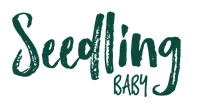$13.95 FLAT RATE SHIPPING | FREE OVER $160 AU WIDE
$13.95 FLAT RATE SHIPPING | FREE OVER $160 AU WIDE

4 Easy Ways to Save Money and Stretch the Family Budget
April 01, 2022 4 min read
With food and fuel prices blowing out over the past few months, it's been more important than ever for families to find ways to make ends meet that don't include skipping meals!
Opting for reusable products is far and away one of the simplest and most effective things we can change to have an immediate impact on the family budget. There are hundreds of things we can switch to reusable that will save money over time: serviettes, nursing pads, kitchen cloths, ear buds, nappy liners, freezer bags and training pants to name just a few.
Today, I want to talk about 4 of my favourites: cloth nappies, cloth wipes, swim nappies and cloth pads.
Reusable Nappies
Cloth nappies can save parents over $1200 during their child’s time in nappies and one of the best ways to ensure you’ll stick with a financial goal is to envision what you’ll do with the savings.
$1200 in savings will look different for everyone, but it might translate to a family holiday, 6 months worth of fuel, several months of groceries, a substantial chunk off your mortgage or music and swimming lessons for your kids.
Obviously, starting with a full stash from the beginning will save you more in the long run, but if you can’t quite manage a full stash to start, just invest in half a dozen nappies and start there. After a few weeks of keeping aside the money you would have otherwise spent on disposables, you can invest in a few more cloth nappies, and keep going until you’re able to commit to full time reusable nappy use.
For another 9 reasons to switch to cloth nappies, CLICK HERE.

Reusable Swim Nappies
If money is something you want to be saving more of this year, but cloth nappies feels like too much of stretch, why not invest in a reusable swim nappy?
Our one-size-fits-most reusable swim nappy will set you back $24.95. If you go swimming with your bub once a week at the local swim centre, all year round. That’s 48 cents for each wear during the first 12 months.
Add to that the extra 18 months of weekly lessons you’ll get out of this swim nappy and the cost per wear comes down to 19 cents.
Add to that all the other times you go swimming with bub throughout the summer months and your cost per wear drops even further.
On the other hand, a disposable swim nappy will set you back around 1.37 every time. Over two and half years of weekly lessons, that’s $178.
The difference between $25 and $178 is a delightful $153.
That’s a tank of fuel, or a night out with dinner and a movie, or new books, or the next size up in clothing for your little one. It’s a haircut and colour, or the pink slip for your car or a zoo friends membership or a term of swimming lessons.
It’s a lot of great things.
But it’s also the satisfaction of knowing you’ve saved over 130 single use products heading to landfill over the first two and half years of your child’s life.
![]()
Reusable Wipes
I must admit, I was a little blown away when I learned the real (monetary) cost of disposable wipes. I honestly thought a couple hundred dollars during the course of a child’s time in nappies would cover the bill, but it turns out I was very wrong.
According to our stockist, Nest Nappies, and backed up by numerous parents I’ve spoken to, disposable wipes can cost a family up to $800 (11,000 wipes) if you use just 2 wipes per change. And we all know how many wipes you need when there’s a poonami involved, and of course wipes are used for sticky faces and hands as well.
I’ve spoken with parents who reckon they’ve used up to 20,000 wipes over 2.5 years, but let’s sit with a conservative figure and say that you have 10,000 occasions on which to use a wipe.
That’s a lot of money on disposable products and a lot of extra rubbish heading to landfill.
If you’re still using disposable wipes, it might be time to make the switch... You’ll only need 2-3 dozen reusable wipes to get you through birth to potty.
Yep. 36 v 10,000.
Reusable wipes don’t take any extra water or detergent to care for because if you’re already using cloth nappies, they can be thrown in with your nappy load. If you aren’t using cloth nappies, they can be combined in the load with your other washing.
They require no special care and can be used for multiple other purposes once they are no longer required by baby.
Once they’ve been loved beyond usefulness, they can be thrown in the compost to continue to break down.

Reusable Menstrual Pads
The cost for disposable menstrual products over 30 years has been calculated at well over $15,000.
This is no small financial cost; in fact, it’s a darn good family holiday or a fair whack off your mortgage. Check out my blog post HERE for more reasons to make the switch to reusable menstrual products.
Beyond the monetary benefits of switching to reusable products, there's the empowerment that comes with not being tied to the supermarket for staples. What will you switch this month?

Are Reusable Nappies More Environmentally Friendly than Disposables?
April 24, 2024 1 min read

3 Ways to Reduce the Outlay of Starting Cloth Nappies
April 23, 2024 2 min read

Cloth Nappy Council Rebates 2024
April 05, 2024 4 min read
